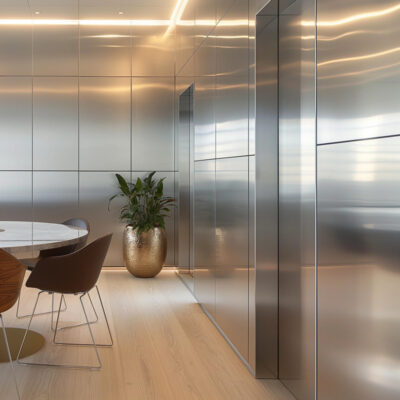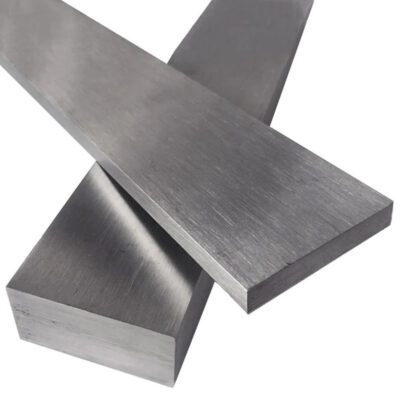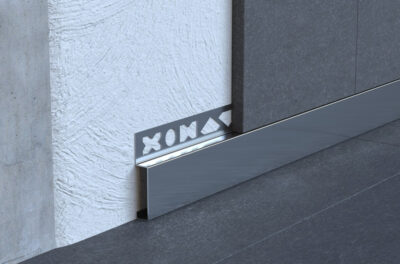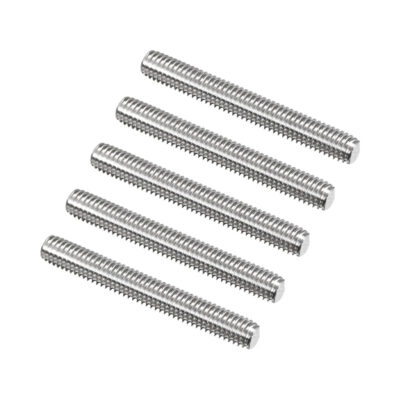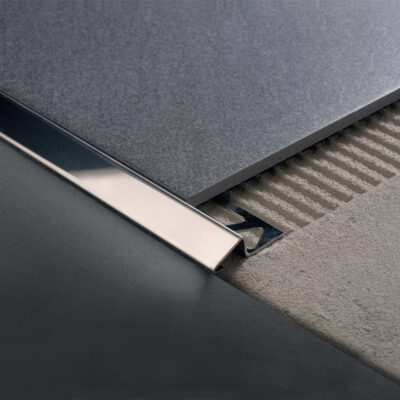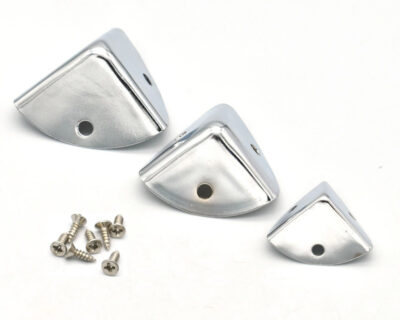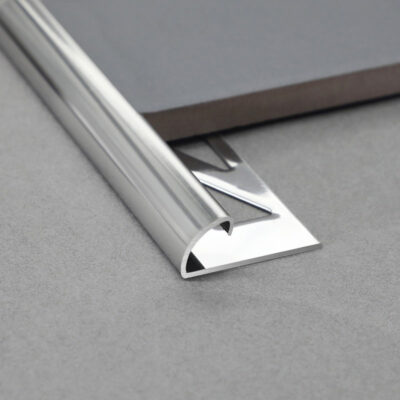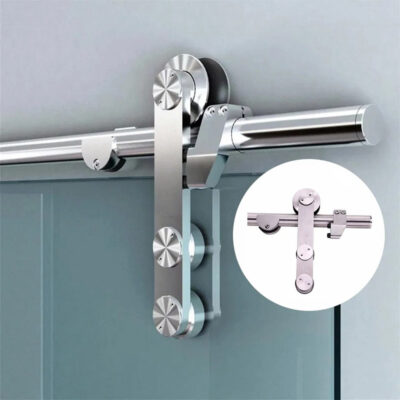Protecting Your Investments: The Ultimate Guide to Stainless Steel Corner Protectors
The moment I walked through a busy distribution center last month, something caught my eye that most people would overlook. Amid the flurry of forklifts and constant movement of goods, there they were—gleaming pieces of metal strategically placed at every corner and edge. Not just decorative elements, but critical components protecting the facility’s infrastructure: stainless steel corner protectors.
These seemingly minor accessories represent a perfect intersection of form and function, providing essential protection while maintaining a professional appearance. Whether in commercial buildings, industrial facilities, or even residential settings, these unsung heroes prevent damage, extend asset lifespan, and improve safety. Having worked on numerous facility optimization projects, I’ve seen firsthand how these simple additions can deliver remarkable returns on investment.
In this comprehensive guide, we’ll explore everything you need to know about stainless steel corner protectors—from types and materials to installation techniques and maintenance requirements. We’ll also examine real-world applications and cost considerations to help you make informed decisions for your specific needs.
The Evolution and Importance of Corner Protection
Corner protection isn’t new—it’s evolved significantly over decades. Early incarnations were basic and purely functional, but today’s stainless steel corner protectors offer sophisticated designs that complement modern architectural aesthetics while providing superior protection.
But why are they so important? Consider this: according to workplace safety statistics, corner-related incidents account for approximately 14% of all workplace injuries. Beyond human safety, unprotected corners lead to significant property damage. Wall corners in high-traffic areas can deteriorate rapidly without protection, leading to costly repairs. Equipment and inventory damage from collisions with exposed corners represent substantial operational losses annually.
Stainless steel has emerged as the premier material for corner protection due to its unique combination of properties. Unlike plastic alternatives that can crack or fade, or aluminum options that may dent easily, stainless steel corner protectors offer exceptional durability, corrosion resistance, and aesthetic appeal. They’re particularly valuable in environments with strict hygiene requirements, as stainless steel is non-porous and easy to clean—a critical consideration in healthcare, food processing, and pharmaceutical facilities.
The sustainability aspect shouldn’t be overlooked either. While the initial carbon footprint of stainless steel production is significant, these protectors typically last for decades with minimal maintenance, making them environmentally sound long-term investments. Additionally, stainless steel is 100% recyclable, with approximately 85% of discarded stainless steel being reclaimed for new production.
Types and Materials: Understanding Your Options
Stainless steel corner protectors come in various configurations to address different protection needs. The most common types include:
Angle Corner Protectors: These L-shaped guards cover two adjoining walls, providing protection at 90-degree corners. They’re typically 1-3 inches wide on each face and come in heights ranging from a few inches to full wall height.
Three-Way Corner Protectors: Designed for areas where three surfaces meet, these provide comprehensive protection for exposed corners in rooms or on columns.
Round Corner Guards: With a curved profile, these protectors eliminate sharp edges entirely, offering maximum safety in environments frequented by children or where enhanced safety is paramount.
Surface-Mount vs. Recessed Models: Surface-mounted protectors attach directly to existing walls, while recessed models sit flush with the wall surface for a more seamless appearance.
The material composition of these protectors significantly impacts their performance. The most common stainless steel grades used include:
| Grade | Composition | Best For | Notable Properties |
|---|---|---|---|
| 304 | 18% Chromium, 8% Nickel | General indoor use, most commercial applications | Good corrosion resistance, excellent formability, non-magnetic |
| 316 | 16% Chromium, 10% Nickel, 2% Molybdenum | Healthcare, food processing, coastal locations | Superior corrosion resistance, excellent against chlorides, better chemical resistance than 304 |
| 430 | 17% Chromium, minimal Nickel | Budget-conscious applications, decorative use | Moderately good corrosion resistance, magnetic, more affordable than 304/316 |
| 201 | 17% Chromium, 4% Nickel, 7% Manganese | Value-oriented applications | Less expensive alternative to 304, slightly lower corrosion resistance |
During a recent factory visit, I observed the stamping process for these protectors. The manufacturer explained that thickness typically ranges from 20-gauge (0.036 inches) to 16-gauge (0.060 inches), with thicker gauges providing enhanced impact resistance for heavy-duty applications. The finishing process is equally important—most protectors feature either a #4 brushed finish (most common), a mirror finish, or occasionally a bead-blasted matte finish for specialized applications.
Choosing the right type involves carefully assessing your specific needs. For a warehouse environment with heavy equipment traffic, I’d recommend 16-gauge 304 stainless with a brushed finish, which balances durability with cost-effectiveness. For a hospital corridor, 18-gauge 316 stainless might be more appropriate, offering enhanced sanitation benefits with adequate protection.
Key Applications Across Industries
The versatility of stainless steel corner protectors makes them valuable across numerous settings. Their applications extend far beyond what most people realize:
Healthcare Environments: In hospitals and clinics, corners face constant bombardment from gurneys, meal carts, and medical equipment. Beyond preventing physical damage, stainless steel’s non-porous nature inhibits bacterial growth—a crucial advantage in healthcare settings. During a hospital renovation project I consulted on last year, infection control specialists specifically requested 316 stainless protectors for their antimicrobial properties and compatibility with harsh cleaning agents.
Industrial and Manufacturing: Factory floors and warehouses represent perhaps the most demanding environments for corner protection. Here, heavy machinery, forklifts, and pallet jacks can cause devastating damage to unprotected corners. The cost of facility repairs and operational downtime can be substantial. One manufacturing client reported a 76% reduction in corner-related repairs after installing heavy-duty stainless corner protectors throughout their facility.
Food Processing: The food industry presents unique challenges, requiring materials that can withstand rigorous cleaning protocols while meeting strict hygiene standards. Stainless steel excels in this environment due to its non-reactive surface and resistance to cleaning chemicals. Additionally, many protectors designed for food processing include rounded edges to prevent food particle accumulation.
Hospitality and Retail: While protection remains the primary function, aesthetic considerations become more important in customer-facing environments. High-end hotels and retail spaces often opt for decorative stainless corner protectors that complement interior design elements while providing discrete protection. Some designers have even incorporated these functional elements as intentional design features.
Transportation Hubs: Airports, train stations, and bus terminals experience extraordinary levels of traffic and equipment movement. Baggage carts, passenger luggage, and maintenance equipment constantly test the durability of corners and edges. The combination of high visibility and heavy use makes these locations ideal candidates for stainless steel protection.
Residential Applications: Though less common, residential uses are growing, particularly in multifamily buildings, luxury homes, and properties with high-end finishes. Modern architectural trends featuring exposed concrete, stone, and other premium materials have increased demand for protective elements that preserve these investments while enhancing their appearance.
A facility manager I interviewed noted: “Our decision to invest in quality stainless corner protection throughout our distribution center wasn’t just about preventing damage—it was about creating a culture of care and attention to detail. When employees see we’re willing to protect the building, they’re more likely to treat all equipment with greater respect.”
Installation Guidelines and Best Practices
Proper installation of stainless steel corner protectors is critical to their performance and longevity. Having overseen numerous installation projects, I’ve compiled these essential guidelines:
Pre-Installation Considerations
Before purchasing or installing corner protectors, thoroughly assess your needs:
Measure Accurately: Corner protectors typically come in standard widths of 1.5″, 2″, or 3″ per side. Measure the area carefully to determine which size will provide adequate coverage without protruding excessively.
Height Determination: Full-height protection offers maximum benefit but at higher cost. For many applications, strategic placement at impact zones (typically 3-4 feet from the floor) provides adequate protection at reduced expense.
Surface Evaluation: Different mounting surfaces require different installation approaches. Drywall, concrete, tile, and metal all demand specific fasteners and techniques.
Traffic Assessment: Areas with heavy equipment traffic may require thicker gauge protectors or additional reinforcement behind the mounting surface.
Installation Process
The installation generally follows these steps:
Surface Preparation: Ensure the mounting surface is clean, dry, and structurally sound. Repair any damage to the underlying wall before installation.
Positioning: Use a level to ensure proper alignment, particularly for longer sections. Temporarily tape the protector in place to verify positioning before permanent attachment.
Fastening Method: Choose the appropriate method based on your specific situation:
Mounting Surface Recommended Fastener Installation Notes Drywall Hollow wall anchors or toggle bolts Pre-drill holes slightly smaller than anchors; use construction adhesive for additional support Concrete/Masonry Concrete screws or expansion anchors Requires masonry bit and hammer drill; dust must be cleared from holes before inserting anchors Metal Studs Self-tapping screws Pre-drill pilot holes; consider using lock washers to prevent loosening Tile Specialized tile anchors Drilling requires steady hand and proper bit to prevent cracking tile; silicon sealant around edges provides water protection Spacing: For screwed installations, fasteners typically should be placed every 12-16 inches for optimal support, with additional fasteners near the ends.
Finishing Touches: After installation, clean the protector thoroughly to remove any fingerprints or installation debris. Some installers apply a thin coat of stainless steel cleaner to enhance the finish.
During a recent hotel renovation, we discovered that pre-drilling stainless steel protectors before bringing them to the installation site significantly reduced on-site time and improved accuracy. However, careful measurement and marking remained essential for proper alignment.
A common mistake I’ve witnessed is using inadequate fasteners that fail under impact, defeating the purpose of the protector. When in doubt, it’s always better to use stronger fasteners than necessary, particularly in high-traffic or industrial environments.
For facilities with frequent reconfigurations, consider removable corner protectors with specialized mounting brackets that allow for repositioning without damaging walls. These cost more initially but offer flexibility for changing layouts.
Maintenance and Longevity Considerations
One of stainless steel’s most compelling advantages is its minimal maintenance requirements compared to other materials. However, proper care still extends service life and maintains appearance. Here’s what facility managers should know:
Regular Cleaning Protocols
For standard environments, a simple wipe-down with a soft cloth and mild detergent is typically sufficient. In more demanding settings like food processing or healthcare, follow these specialized approaches:
Healthcare Settings: Use hospital-grade disinfectants compatible with stainless steel. Many facilities use quaternary ammonium compounds that disinfect without damaging the finish. Always wipe in the direction of the grain to prevent streaking.
Food Processing: Look for cleaners approved for food-contact surfaces. A solution of hot water and mild dish detergent works well for daily cleaning, with periodic sanitizing using food-safe sanitizers.
Industrial Environments: Heavy grease or oil deposits may require stronger degreasers. Test any new cleaning product in an inconspicuous area first.
Removing Fingerprints: For high-visibility areas, specialized stainless steel cleaners containing mineral oil can help minimize fingerprints and maintain shine.
The direction of cleaning is important—always follow the grain of the stainless steel to maintain its appearance and prevent scratching. For brushed finishes, this means wiping in the direction of the visible lines in the metal.
Addressing Damage and Wear
Despite their durability, stainless steel corner protectors can occasionally sustain damage:
Minor Scratches: For light surface scratches on brushed finishes, non-abrasive cleaners specifically designed for stainless steel can help blend minor imperfections. For deeper scratches, professional refinishing may be necessary.
Dents: Small dents may be addressed by carefully removing the protector and working from behind, though significant impacts often require replacement.
Chemical Damage: While stainless steel resists most chemicals, certain compounds can cause discoloration or pitting. If chemical exposure occurs, immediate cleaning with neutral pH cleaners and thorough rinsing is essential.
In environments with particularly aggressive chemicals or extreme conditions, periodic inspection for signs of corrosion is prudent. This is especially true in coastal locations where salt exposure can eventually compromise even high-quality stainless steel.
During a facility assessment last quarter, I noticed several 10-year-old stainless corner protectors that looked nearly new despite heavy use. The facility manager attributed this to their cleaning protocol—a weekly wipe-down with microfiber cloths and periodic application of stainless steel cleaner. This minimal investment in maintenance had extended the life of their corner protection significantly.
Customization Options for Specialized Needs
Standard stainless steel corner protectors work well for many applications, but customization options can address specific requirements or aesthetic preferences. The market offers considerable flexibility:
Size and Dimension Variations
While stock sizes typically range from 1″ to 3″ wings, custom fabrication can accommodate virtually any dimension. I’ve seen specialized applications requiring 6″ wings to protect particularly vulnerable corners in loading areas. Height options are equally flexible, from spot protection of 4-12″ sections to full floor-to-ceiling coverage.
Thickness can also be customized based on the anticipated impact level. Light-duty applications might use 20-gauge (0.036″) material, while heavy industrial settings might require 14-gauge (0.075″) or even thicker.
Finish Options
The finish dramatically affects both appearance and function:
#4 Brushed: The most common finish, featuring a unidirectional satin appearance that hides minor scratches and fingerprints effectively.
Mirror/Bright Annealed: Offers a highly reflective surface popular in decorative applications but shows fingerprints more readily.
Bead Blasted: Provides a uniform matte appearance that excels at hiding fingerprints and minor blemishes.
Patterned: Some manufacturers offer embossed or patterned finishes like diamond plate for specialized industrial applications or unique aesthetic requirements.
Colored: PVD (Physical Vapor Deposition) coating can add black, bronze, gold, or other colors while maintaining corrosion resistance.
Mounting Variations
Beyond standard screw mounting, options include:
Adhesive Mounting: Uses industrial-grade adhesives for applications where drilling isn’t possible or desirable.
Magnetic Systems: Allows for temporary or repositionable installation in certain environments.
Concealed Fastening: Systems that hide mounting hardware for improved aesthetics.
During a recent project at a luxury hotel, the design team required corner protectors that would blend seamlessly with their upscale aesthetic. The solution was custom fabricated protectors with a champagne bronze PVD finish that complemented the other metallic elements in the space. While significantly more expensive than standard options, these specialized protectors satisfied both the functional requirements and the designer’s vision.
A manufacturing client with heavy forklift traffic opted for a hybrid approach—standard stainless protectors with customized thickness (14-gauge) and additional internal reinforcement at particularly vulnerable corners. This targeted customization provided enhanced protection where it was most needed without the expense of upgrading all protectors.
Cost Considerations and Return on Investment
The investment in quality corner protection represents a classic case of preventive spending—allocating resources now to avoid greater expenses later. Understanding the cost factors and potential returns helps justify these expenditures:
Price Determinants
Several factors influence the cost of stainless steel corner protectors:
Material Grade: 304 stainless typically costs 15-25% less than 316 stainless, while 430 stainless might save an additional 10-15% compared to 304.
Thickness/Gauge: Heavier gauges increase material costs proportionally—16-gauge protectors typically cost 20-30% more than 20-gauge options.
Size and Height: Larger wing dimensions and taller protectors require more material, directly affecting cost.
Quantity: Bulk purchases often qualify for significant discounts, sometimes reducing per-unit costs by 20-40% for large orders.
Customization: Special finishes, non-standard sizes, or specialized mounting solutions can increase costs substantially.
As a general reference, standard 304 stainless corner protectors with 1.5″ wings might range from:
- $15-30 for 48″ heights in 20-gauge material
- $25-45 for 48″ heights in 18-gauge material
- $35-60 for 48″ heights in 16-gauge material
Custom options and premium grades can increase these figures significantly.
Return on Investment Analysis
The ROI calculation involves comparing the upfront investment against avoided costs:
Repair Avoidance: Wall corner repairs typically cost $200-500 per incident, depending on the extent of damage and finish materials.
Operational Continuity: Facility repairs often cause disruption—the value of avoiding downtime should be factored into ROI calculations.
Safety Incidents: Corner-related injuries can result in significant direct costs (medical expenses, workers’ compensation) and indirect costs (lost productivity, replacement staffing).
Asset Preservation: In premium spaces, protecting expensive finishes and maintaining appearance has tangible value.
Longevity: Quality stainless steel protectors typically last 15+ years with minimal maintenance, spreading the investment over a long service life.
A facilities director at a distribution center shared this compelling data: “Before installing corner protection, we averaged 14 corner repair incidents annually at approximately $350 each. After installation, this dropped to zero. Our $8,200 investment in stainless corner protectors paid for itself in less than two years.”
For maximum value, strategic deployment often makes sense—using premium protectors in high-visibility or customer-facing areas while selecting more utilitarian options for back-of-house locations.
Real-World Applications: Case Studies
Examining successful implementations provides valuable insights into the practical benefits of stainless steel corner protectors across different settings:
Hospital Corridor Renovation
A major metropolitan hospital needed durable corner protection that could withstand constant equipment traffic while meeting stringent infection control requirements. The solution involved:
- 316 stainless steel corner protectors with 2″ wings
- Full-height installation at major intersections and partial height (48″) at other locations
- #4 brushed finish for easy cleaning and maintenance
- Sealed edges to prevent bacterial harboring
Results after 18 months showed:
- 94% reduction in corner repair maintenance requests
- Simplified cleaning procedures for environmental services staff
- Compliance with infection control standards
- Positive feedback from staff regarding improved mobility of equipment
The director of facilities noted: “The initial cost seemed high compared to vinyl alternatives, but the durability and infection control benefits have proven this was the right decision. We’ve since standardized on stainless protectors for all future renovations.”
Food Processing Facility Implementation
A dairy processing plant struggled with damaged corners that created sanitation challenges during FDA inspections. Their solution included:
- Custom-fabricated 304 stainless corner protectors with oversized 3″ wings
- Rounded edges to eliminate hiding places for food particles
- Specialized mounting to allow removal for deep cleaning
- Sealed installation with food-grade silicone
The improvements were substantial:
- Eliminated citation risks related to damaged surfaces
- Reduced cleaning time by approximately 45 minutes per shift
- Extended time between required facility repairs from quarterly to beyond 5 years
- Improved sanitation audit scores by 12%
The plant manager reported: “Beyond the practical benefits, the stainless protectors have contributed to an overall perception of quality and cleanliness that impacts everything from employee morale to customer impressions during facility tours.”
Luxury Hotel Public Areas
A five-star hotel sought corner protection that wouldn’t detract from their premium aesthetic. Working with their design team, they implemented:
- Custom 304 stainless protectors with specialized PVD coating to match existing hardware
- Variable heights based on location and risk assessment
- Concealed mounting system for clean appearance
- Integrated design that transformed necessary protection into a design element
The hotel’s facilities director shared: “What started as purely functional protection evolved into an intentional design element. The architects actually incorporated the protectors into their overall material palette, using them to complement other metallic elements throughout the space.”
These case studies demonstrate how thoughtful selection and implementation of stainless steel corner protectors can deliver benefits beyond simple corner protection—improving operations, enhancing aesthetics, and supporting specialized requirements like sanitation and infection control.
Looking Ahead: Innovations and Future Trends
The corner protection industry continues to evolve, with several emerging trends worth monitoring:
Integrated Technology: Some manufacturers are beginning to incorporate lighting elements, sensors, or even QR codes into corner protectors for wayfinding or monitoring purposes. A hospital I recently visited had installed corner protectors with embedded LED lighting that provided subtle directional guidance while protecting busy intersections.
Sustainable Manufacturing: Growing emphasis on responsible production has led to corner protectors made from recycled stainless steel with documented chain of custody. E-Sang and other forward-thinking manufacturers are developing processes that reduce the carbon footprint of production while maintaining quality.
Advanced Finishes: Beyond traditional options, antimicrobial coatings for healthcare applications and specialized finishes that resist fingerprints are gaining popularity. These value-added features address specific pain points for facility managers.
Modular Systems: Some newer designs feature modular components that allow for easier replacement of damaged sections without removing the entire corner protector. This reduces maintenance costs and extends the useful life of the installation.
Smart Selection Tools: Digital tools that help facilities teams select appropriate protection based on traffic patterns, impact risks, and other variables are emerging. These tools analyze facility usage data to recommend optimal protection strategies, moving beyond the one-size-fits-all approach.
The future points toward corner protection becoming more specialized, sustainable, and integrated with overall facility design and operations. As with many building components, the trend is toward multifunctional elements that serve both protective and aesthetic purposes while contributing to overall facility performance.
Final Thoughts
The humble corner protector, particularly in its stainless steel form, represents a perfect example of how thoughtful infrastructure protection delivers benefits far exceeding its modest appearance. From preventing costly damage and enhancing safety to supporting specialized requirements like infection control, these seemingly simple components play a crucial role in facility management.
When selecting and implementing corner protection, consider the full spectrum of benefits beyond mere damage prevention. Factor in maintenance requirements, aesthetic impact, specialized needs like sanitation, and long-term value when making decisions. The initial investment in quality stainless steel protection typically pays dividends over many years of service.
The most successful implementations I’ve observed share common elements: thorough needs assessment, strategic selection of materials and specifications, professional installation, and integration into regular maintenance routines. When these elements align, corner protectors deliver exceptional value and performance.
Whether you’re managing a hospital, warehouse, food processing facility, or upscale hotel, giving proper attention to corner protection will preserve your facility’s appearance, reduce maintenance costs, and support safer operations for years to come. In the world of facility management, few investments deliver more reliable returns than quality stainless steel corner protectors.
Frequently Asked Questions about Stainless Steel Corner Protectors
Q: What are Stainless Steel Corner Protectors and what do they do?
A: Stainless Steel Corner Protectors are devices designed to protect walls from damage caused by heavy equipment, carts, and other impacts. They are made from durable stainless steel, providing a long-lasting solution for maintaining the integrity and appearance of walls in various environments such as hospitals, retail stores, and warehouses.
Q: What types of environments benefit most from Stainless Steel Corner Protectors?
A: Stainless Steel Corner Protectors are beneficial in high-traffic and high-risk environments. These include hospitals (where wheelchairs and gurneys may cause damage), retail stores (where shopping carts are common), warehouses (where equipment like forklifts are used), and commercial kitchens (where cleanliness is crucial). They ensure that walls remain protected and aesthetically pleasing.
Q: What materials are Stainless Steel Corner Protectors typically made from?
A: Stainless Steel Corner Protectors are typically made from high-quality stainless steel alloys, such as Type 304 or Type 316L. These materials provide excellent resistance to corrosion and wear, making them suitable for a wide range of applications.
Q: How are Stainless Steel Corner Protectors installed?
A: Installing Stainless Steel Corner Protectors is relatively straightforward. They can be attached using screws, adhesive tape, or construction adhesives. Some models come with winglets that ensure a better fit even if the wall corners are not perfectly square. This makes installation easier and more effective.
Q: What are the advantages of using Stainless Steel Corner Protectors over other materials?
A: Stainless Steel Corner Protectors offer several advantages over other materials:
- Durability: Highly resistant to corrosion and wear.
- Aesthetics: Provide a sleek, professional appearance.
- Hygiene: Easy to clean, making them suitable for environments where hygiene is important.
- Cost-Effectiveness: Long-lasting, reducing maintenance costs over time.
Q: Can Stainless Steel Corner Protectors be customized for different applications?
A: Yes, Stainless Steel Corner Protectors can be customized in terms of width, length, and attachment options. They are available in various widths and can be fabricated to fit specific lengths or configurations, allowing them to suit a wide range of applications and installation needs.


